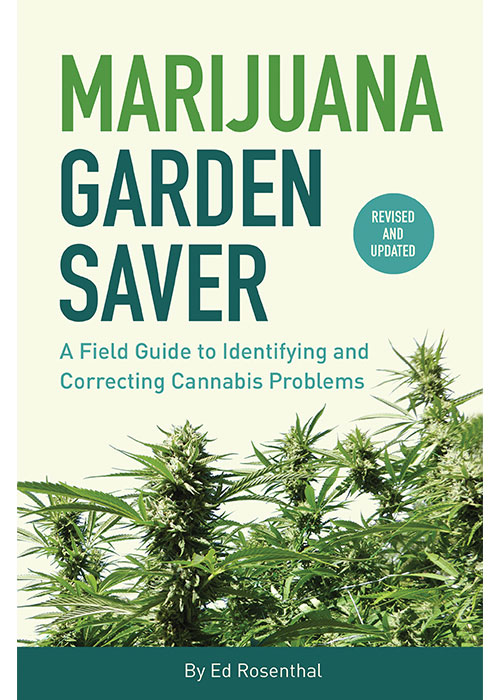When plants cannot get the nutrients they need, they do not function properly, adversely affecting growth and yield. This can occur in any growing medium, while using any planting mix or technique — coir, rock wool, soil, soil-less, hydroponic or aeroponic. Plant disorders are characterized by their symptoms, which appear more quickly in hydroponic gardens than in planting mixes or soil.
An overabundance of nutrients can result in nutrient burn or toxicity and can also lock out other ingredients. Unless the damage is slight, individual leaves do not recover from nutrient deficiencies. Some nutrients are mobile and are translocated from older to new growth so the damage is seen in older leaves, not in new growth. Other nutrients are not mobile. Their deficiencies are apparent in the new growth.
All fertilizer packages list three numbers that identify the N-P-K ratio. They usually appear as three numbers with dashes between them such as 25-10-10. The first number represents nitrogen (N), which is responsible for foliage or leaf development. Fertilizers that promote heavy leaf growth have a higher first number (N) than the other two. The second number represents phosphorus (P), which is important for strong stems and flowering. The third number is potassium (K), which promotes healthy metabolic function. Sometimes micronutrients are listed after the macronutrients: These are calcium (Ca), copper (Cu), manganese (Mn) and zinc (Zn).
All nutrients are required to be present for proper metabolic function. Most growers who use premixed nutrient systems and faithfully follow the manufacturer’s feed schedules never see deficiencies before they flush their plants. Two deficiencies that may appear when using commercial fertilizers are calcium (Ca) and magnesium (Mg). On the other hand, organic, living soil and outdoor plants that do not receive supplemental nutrition are more often subject to deficiencies, but only because living soil systems have more variables involved in delivering nutrients compared to concentrated nutrient products.

The Importance of pH
pH is a logarithmic measure of the acid-alkaline balance in soil or water. A pH of 1 is the most acidic solution, 7 is neutral and 14 is the most alkaline. When the pH is within the 5.8-6.3 range, slightly acid, the nutrients dissolve well and are available to the plants. As the pH rises above or falls below those numbers, some nutrients precipitate out of solution. Plants cannot absorb nutrients when they are precipitated. Plants can only “drink” them when they are in solution, so even if nutrients are present, they are only available to the plants only when they are dissolved. As a result, even though sufficient nutrients may be present, plant roots do not have access to them so and the plants will indicate deficiencies. Plants that are growing in water or soil outside the proper pH range grow very slowly.
Different species of plants have adapted to living under different pH levels. Marijuana has been grown in hydroponic solutions with a pH as low as 5.5, but it does best when grown in soil or water within a pH range of 5.6-6.3, slightly acidic. This is the pH of good garden soils. All plant nutrients are water soluble in this range so they are readily available to the plants. Outside this range some become less available.
pH can be viewed as a see-saw. As fertilizers are added it can drop or rise rapidly. It’s up to the grower to keep it the pH stable. It is important to measure pH after adding nutrients. When pH levels are out of the “safe” range, nutrients fall out of solution and are unavailable to the plants. pH is important for both soil and hydroponic gardening. Failing to monitor it can lead to disastrous results. The pH level directly affects plants’ ability to absorb nutrients. When the pH rises above 6.2 some micronutrients precipitate out of solution and are less available. Below 5.5, boron (B), copper (Cu), manganese (Mn) and phosphorous (P) become too available. This can result in toxicity.
The only accurate way to adjust the pH is by using a pH meter or pH test papers. Guesswork won’t do.
“Marijuana Garden Saver” excerpt originally published in the print edition of Cannabis Now.
Source link
#Rosenthals #Guide #Understanding #Nutrients